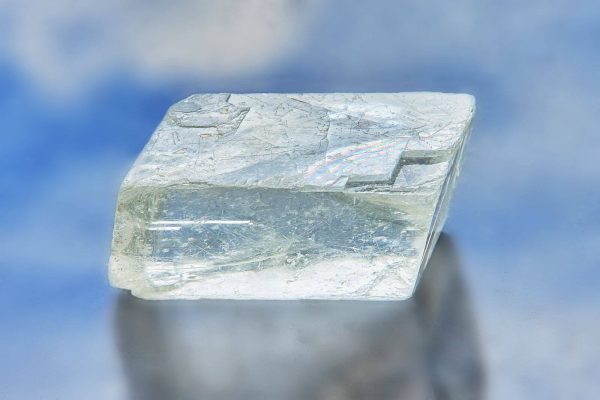
Calcite is a calcium carbonate mineral, which is the most common substance in natural calcium carbonate and is widely distributed. Calcite crystals have various shapes, and their aggregates can be clusters of crystals, or they can be granular, massive, fibrous, stalactite-like, soil-like, etc. Knocking calcite can yield many square fragments, hence the name calcite. The color of calcite changes due to the impurities contained in it. For example, when it contains iron and manganese, it is light yellow, light red, brown black, etc., but it is generally white or colorless.
Calcite has various crystal shapes, and is the main mineral in limestone, marble and beautiful stalactites. Travertine can be deposited in spring water, and is often a secondary mineral in igneous rocks. In the almond holes of basalt flows, calcite is often filled in the cracks of sedimentary rocks to form fine veins, or through biological processes, it can be formed by shells or The rocky way yields.
Calcite is one of the most important rock-forming minerals in the earth’s crust, and its main component is CaCO3. Calcite has various crystal shapes and is the main mineral in limestone, marble and stalactites. Calcite is used as a solvent in the metallurgical industry; it is used in the construction industry to produce cement and lime; it is also used in plastics, papermaking, and toothpaste; and it is used as a filling additive in food.
cement industry
Limestone is the main raw material of cement, accounting for 70% to 90% of the raw material composition. The ingredients are clay raw materials, siliceous raw materials, iron-aluminum raw materials, etc.
Plastic industry
Calcium carbonate is the most widely used inorganic mineral powder material with the largest dosage. As a commonly used powder material for plastics, calcium carbonate has many advantages that other powder materials do not have, such as high whiteness, easy surface organic treatment, and ease of processing. It has light wear on equipment and molds, good fluidity during molding processing, abundant resources, and low price, making it the preferred inorganic mineral powder material in the plastics processing industry.
Rubber industry
For rubber, calcium carbonate is the third largest reinforcing filler after carbon black and white carbon black. It has the characteristics of low toxicity, low price and good reinforcing effect.
Paint industry
Heavy calcium carbonate is the number one filler in the world’s coating industry. It is not only cheap, but can greatly reduce the production cost of coatings. As one of the functional fillers, it can affect many properties of the coating, such as changing the mechanical strength of the coating film. Improve the water resistance and powdering resistance of the coating film. As a high-quality and low-cost functional filler, calcium carbonate has always been one of the most important basic substances in civil and industrial coatings.
Paper industry
Calcium carbonate is one of the main inorganic chemical raw materials in the paper industry. Calcium carbonate used as paper filler and paper coating pigment can be classified into two categories: one is natural calcium carbonate (GL) made from grinding limestone, and the other is chemical calcium carbonate. Synthetic product manufactured by precipitation—precipitated calcium carbonate (PCC).
Food Industry
Pure mineral calcium carbonate can be used to remove harmful substances in minerals, such as heavy metal ions, etc. using various technological methods to prepare relatively pure calcium carbonate, which can be used as an additive for various foods.
pharmaceutical industry
In the prevention and treatment of osteoporosis and other related diseases, calcium carbonate is the most widely used because of its high calcium content, low price, no side effects, and the best cost-effectiveness. Although there are more than a dozen calcium salts used as calcium supplements, calcium carbonate preparations are the most widely used, the best calcium supplement with the highest calcium content, good effect, and low price.
